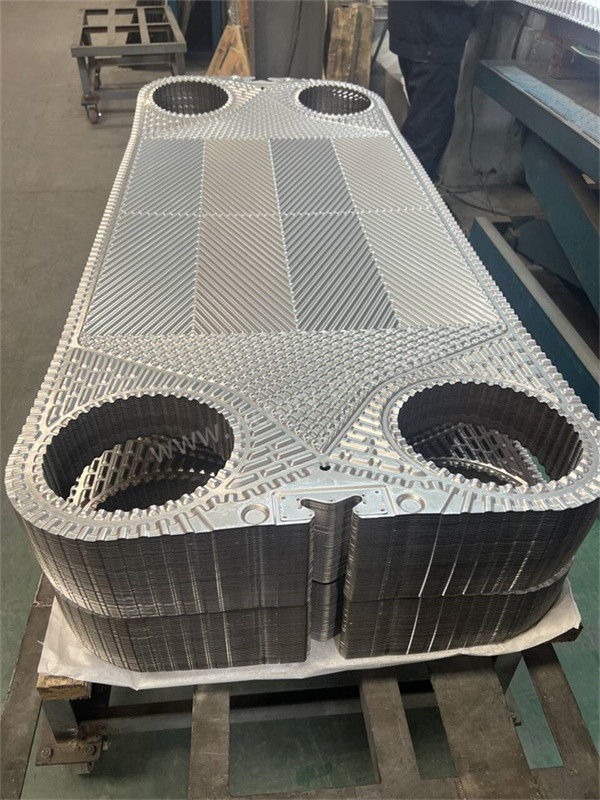Changzhou Victory Technology Co., LTD |
|
Verified Suppliers
|
|
Product Description
M15B M15M Hight Theta Heat Exchanger Plate With Gasket For Optimal Cooling
Heat Exchanger Plates
Heat exchanger plates are components used in plate heat exchangers, which are devices designed to transfer heat from one fluid to another. These plates are typically made of metal and are arranged in a way that allows for efficient heat transfer between the two fluids while keeping them physically separated.
The need for heat exchanger plates arises from the requirement to efficiently transfer heat between two fluids without allowing them to mix. This is important in various industrial, commercial, and residential applications where the transfer of heat is essential for processes such as heating, cooling, and thermal energy recovery.
The key reasons for using heat exchanger plates for heat transfer include:
1. Efficient Heat Transfer: Heat exchanger plates are designed to maximize the surface area available for heat transfer between the two fluids, resulting in efficient and rapid thermal exchange.
2. Compact Design: Plate heat exchangers with heat exchanger plates offer a compact and space-efficient solution for heat transfer compared to traditional shell-and-tube heat exchangers.
3. Versatility: Heat exchanger plates can be configured in different patterns and designs to accommodate various fluid types, flow rates, and temperature differentials, making them versatile for a wide range of applications.
4. Energy Efficiency: By facilitating efficient heat transfer, heat exchanger plates contribute to energy savings and improved process efficiency in heating and cooling systems.
| Brand | Model |
M3,M6,M6-D,M6M,M6MC,M10B,M10M,M15B,M15M,M15MC,M20M M20B,MX25B,MX25M,M30,TS6,TL6B,TS20,TL10B,TL10P,T20B,T20M, T20P,TL35B P16,P26,P36,AK20,JWP26,JWP36,M6MW,M10BW,MK15BW |
| Material | Specification |
| Stainless Steel | SUS304 316 316L 310S 904 |
| Titanium and titanium-palladium alloy | TAi TAi-Pd |
| Hastelloy | C276 D205 B2G |
| Nickel | Ni200 Ni201 |
| Molybdenum | 254 |
Products are mainly suitable for ACCESSEN/GEA (Kelvion)/ APV/ Sondex/ Tranter/ Hisaka/ API/ Funke/ Vicarb/ Mueller/ SWEP/ Fischer/ AGC/ Thermalwave/ ITT/ LHE/ DHP, etc.
Applacations
| Plate material | Suitable for fluids |
| Stainless steel (SUS304.316, etc.) | Purified water, river water, edible oil, mineral oil |
| Titanium and titanium palladium (Ti, Ti-Pd) | Sea water, salt water, salt compounds |
| 20Cr,18Ni,6Mo(254SMO) | Dilute sulfuric acid, dilute salt aqueous solution, inorganic aqueous solution |
| Nickel (Ni) | High temperature, high concentration caustic soda |
| HASTELLOY alloy (C276, D205, B2G) | Concentrated sulfuric acid, hydrochloric acid, phosphoric acid |
Plate heat exchanger plate thickness configuration
Production Process:

